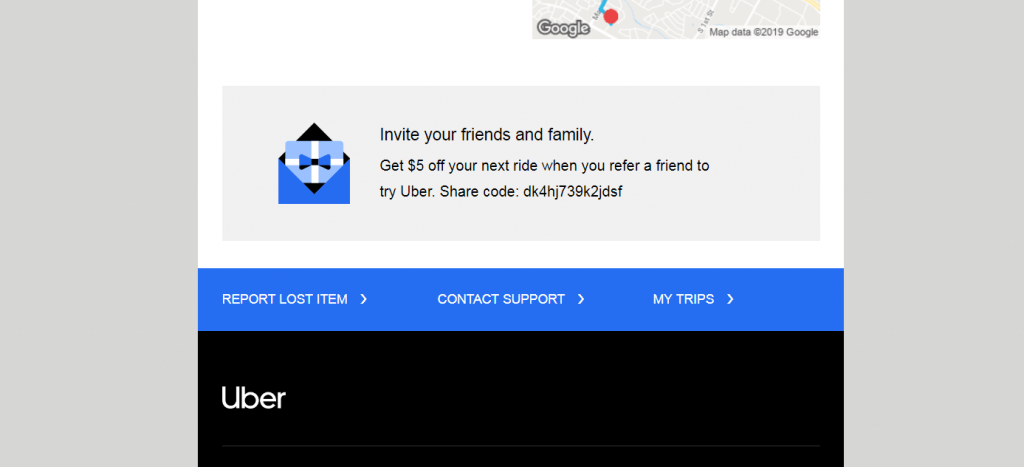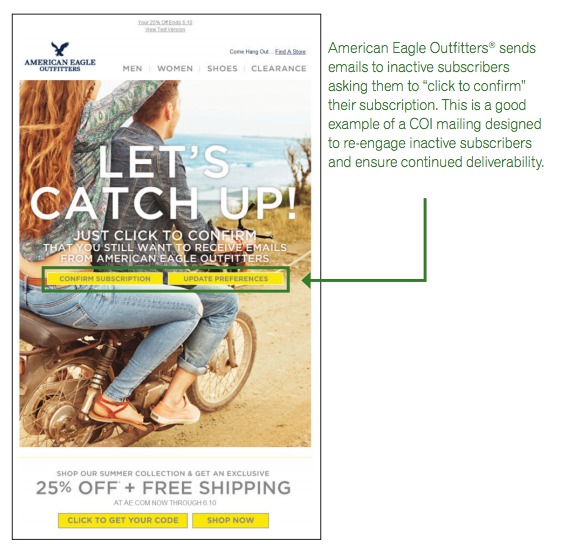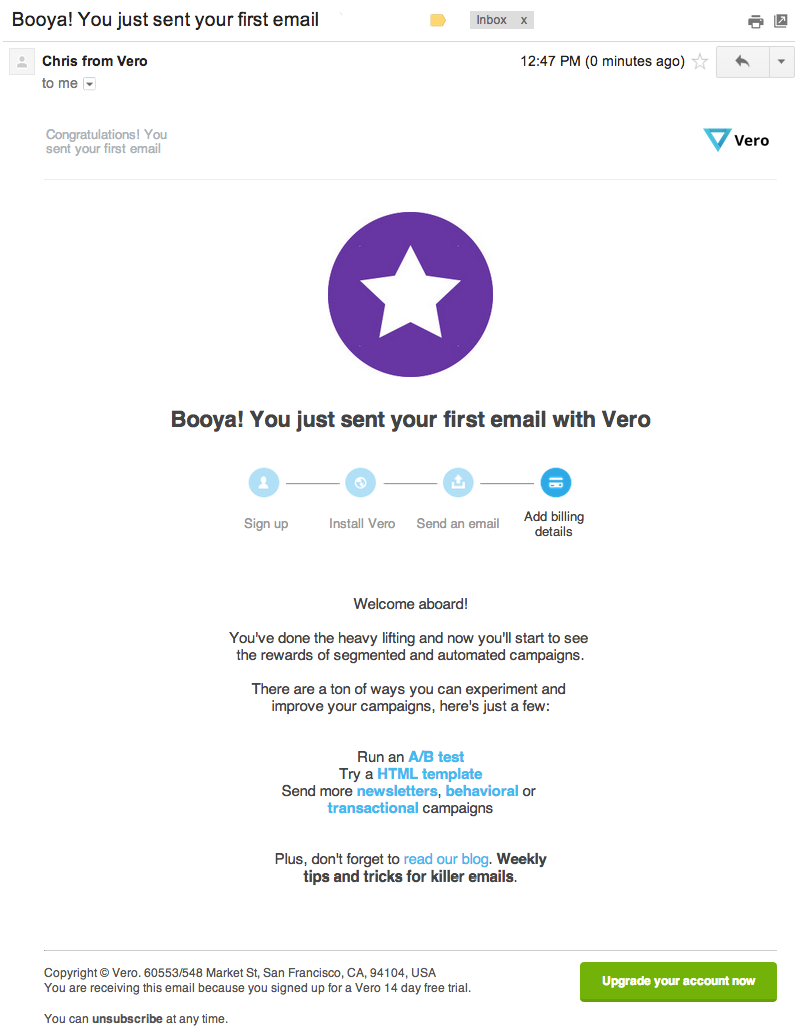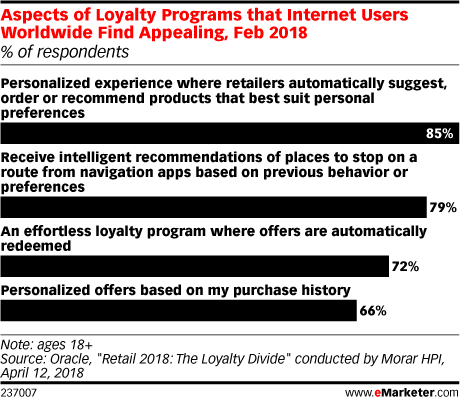Confirmation emails are usually as delightful as your typical in-store receipt (read: not at all delightful).
Because these emails are triggered by the user’s actions, your customers are expecting something—which means they open, notice, and engage with confirmation emails more than they might with other email types.
This post will explain why confirmation emails come at a critical stage in the customer lifecycle, the three steps to make confirmation emails succeed are, and the limits of confirmation emails as a strategy.
Table of contents
What is a confirmation email?
A confirmation email is an email sent to a customer after an online purchase or signup.
CTR for confirmation emails: the Isabella example
Experian found that confirmation emails have average click-through rates from 12 to 20%, approximately five times the rate of bulk mailings. The same trend held across any email metric, including open rates, revenue per email, and transaction rate.
Uninspired confirmation emails are a missed opportunity to upsell, provide great customer service, and generally do something memorable while your customer is already paying attention.
That’s the principle that drove Isabella, a health and wellness retail company, to change their text-only receipts to an HTML-rich email that relied on their recommendation feature. The new emails saw a 111% higher conversion rate than existing sales or alerts emails.
Isabella did quite a bit to get these results. They launched the recommendations feature, moved to an HTML-rich format, and aligned their web and email experiences.
Essentially, Isabella took advantage of the online version of the moment when you’re asked, “Would you like fries with that?” They paired what they knew about their customers’ intent and their company goals to deliver relevant offers.
More simply, they looked at an underdeveloped touchpoint and thought about how to serve their customer better. At their best, confirmation emails are one-on-one communications triggered by the customer at critical stages in their lifecycle.
3 reasons why confirmation emails are important
Users essentially ask for confirmation emails by submitting fresh data when they subscribe, sign up for an event, download an information product, or purchase—all potentially key steps in their lifecycle.
1. Confirmation emails provide the opportunity (and challenge) of a one-on-one conversation
Unlike any other digital medium (except maybe text or direct messages), email is a one-on-one conversation, which means it has the unique potential to drive sales through relevant, personal offers.
In their 2018 Email Marketing Census, Econsultancy found that over half (61%) of respondents achieved more than 10% of their sales from email. But when asked what they’d like to improve, 68% of email marketers said personalization.
That’s likely because effective one-on-one conversations require tailoring to a specific individual, which requires data, which can be a challenge.
To some degree, confirmation emails solve the data challenge because they come at these critical moments and are triggered by users.
2. Confirmation emails happen at critical moments in the lifecycle
By triggering a confirmation email, the user is sharing important information:
- They’re telling you where they are in the lifecycle.
- They’re telling you what they want.
When you know what your customer is thinking, you can more easily meet—even exceed—their needs. What’s more, because you know exactly where they are, you also know how to advance them in their lifecycle. Based on that knowledge, you can send more relevant offers.
3. Confirmation emails come with valuable data
With confirmation emails, you have a wealth of recent data from your customer because they just triggered the email. Depending on the form, the user could have updated data fields, inputted new data, or passively given you data through what they purchased or signed up for.
As an added bonus, experimenting with confirmation emails can give you valuable data about the gap between what your customer is thinking and where you want them to go. As you test changes, you can find mistaken assumptions and get a clearer picture of your customer.
How to write a great confirmation email
Here’s a three-step process to create great confirmation emails.
Step 1: Use sign-up confirmations to clarify the terms of your customer relationship
Depending on your sales process, a newsletter or other email sign-up confirmation can be the first one-on-one message you send. It sets the tone and expectations for your relationship. At the same time, it’s early, so you might not know much about your customer.
| What user just did | What user expects to see | Questions to ask yourself | How you might add value while moving down sales funnel |
| Signed up for ongoing communication through a web form | Details about their subscription; Button to confirm their subscription; Ability to edit email preferences | Do we have enough information to qualify this lead? Is this prospect ready to make a purchase? What kind of offer could we make? | Provide links to a few pieces of content—depending what they click, you’ll know more about their interests; Special offers for new customers |
Consider your sales funnel.
As you’re crafting this critical touchpoint, consider your overall sales funnel and whether you and your customer have enough information to move to the next step. Depending on the length of your funnel, the email could look very different:
Set Clear Expectations.
Beyond having the “right message at the right time,” this first one-on-one touchpoint can shape your customers’ expectations for how they’ll be treated—including expectations about the type of content they’ll receive and how frequently they’ll receive it.
Forrester found that 77% of consumers say they should be able to decide how, when, and where marketers communicate with them. Yet, according to Experian, 60% of marketers don’t give customers the option to communicate their preferences.
The sign-up confirmation email is an opportunity to close this gap. Here’s an example from American Eagle’s customer re-engagement program:
This re-engagement email gives the user the opportunity to confirm their subscription and preferences, but that request doesn’t have to wait until a customer has lost interest.
Research shows that 67% of users unsubscribe because emails come too frequently. By asking and then respecting how a user would like to be communicated with early on, you can continue a positive relationship with them through purchase and beyond.
Why it matters: Clarity reduces friction.
AWeber conducted a study to determine which email subject lines performed best. They tested 20 subject lines, sent to a list of over 45,000 subscribers. They found that clear subject lines outperformed catchy ones by 366%.
Overall, maintaining clarity is a good policy for any experience, and the principle holds true for confirmation emails—from the subject line to the call to action, and everything in between.
Be clear with your new subscribers (i.e. potential customers) about how you’ll communicate with them, what they’ve subscribed to, and what value you hope to add with your email communications.
Step 2: Show micro-conversion actions (trial sign-up, event, or info product) as progress toward a goal
Micro-conversions are the tricky steps between an introduction and the final sale. During that time, users may be interested in several offers.
| What user just did | What user expects to see | Questions to ask yourself | How you might add value while moving down sales funnel |
| Signed up for a trial | Login information and trial data | What else do they need to know to convert? What are the big things they need to accomplish in the trial? How can we make that easier? | Make yourself available; Provide an info product that walks them through the process; Provide rewards for the steps already taken |
| Registered for an event | Event details, including time & location; “Add to calendar” option | What’s the next step for this customer? What information are they looking for? | Provide an info product that builds on their inquiry |
| Requested an information product | Link to the information product | How do we help this customer further their goals? | Serve them the next logical info product based on their initial request |
Customers may be stepping into new terrain; show them how far they’ve come.
While the specific actions differ by industry, these middle-of-the-funnel steps are all attempts by the user to educate themselves on your product or a relevant topic. Showing their progress toward the goal can motivate them to move forward.
Take, for example, this email from Vero, an email marketing software company. This is the confirmation email that users receive once they’ve sent an initial email through the tool:
Vero explicitly shows users how far they’ve come in the process (they’ve already sent one email), then seamlessly leads users to the next step (running an A/B test or sending a newsletter). This email has a 72% open rate.
Vero taps into an important insight: Confirmation emails sent for micro-conversions act as part of the onboarding process.
In the same way that user onboarding flows make the process of becoming a user easier, your confirmation email is a step in the customer onboarding flow that makes the process of becoming a customer easier.

Here, Vero borrows a user onboarding convention: They show the steps of using the product in a linear graphic to make users feel like becoming a customer is manageable. They also show how far down the path you’ve come, giving you momentum to finish.
Depending on your product and sales funnel, you can show how close a prospect is to receiving a loyalty program deal or play with showing progress to a certain level of expertise by downloading information products.
Intercom has a useful description of user onboarding considerations that you can use as inspiration for your micro-conversion confirmation emails.
Why it works: Artificial advancement drives effort
Researchers at the USC Marshall School of Business describe the “endowed progress effect,” whereby individuals put greater effort into completing a task they think they’ve already begun, even if that process is constructed artificially.
Through a series of studies, Nunes and Dreze found that the illusion of progress was a powerful motivator—as users felt that they’d already started a task, they gained momentum toward completing it.
They give examples of customers who are loyal to an airline brand because they’ve already gained mileage points toward a reward, even though that happens ambiently whenever a passenger books a flight.
Step 3: Reward customers in purchase confirmations to create a reciprocal relationship.
When existing customers repurchase, they save retailers the cost of acquiring a new customer, yet online retailers focus their marketing dollars on acquiring new customers rather than delighting existing ones.
The purchase confirmation email is a key opportunity to drive repeat purchases because it’s the first impression for a customer of how they’ll be treated in the new post-purchase relationship.
| What user just did | What user expects to see | Questions to ask yourself | How you might add value while moving down sales funnel |
| Purchased a product | Receipt with order information; Shipping information | What could they buy next? What did similar customers do next? | Suggest similar useful product; Reward customers for loyalty |
| Set up a subscription | Receipt with order information; Login information | What makes customers cancel their subscription? How do I avoid that? What add-on or higher level would come next? | Provide an info product with benefits of an add-on product; Reward customers for loyalty |
Confirmation emails aren’t built to drive traffic.
Typical ecommerce receipts are “dead ends”—emails that provide information but don’t offer a next step to drive users back to your site. They simply aren’t built to create repeat engagement.
That’s why it’s not surprising that receipts with cross-sell opportunities show a higher click-through rate, on average, than those without:
These emails are exactly what Isabella tapped into when they used their website recommendations engine for their receipts. By offering related products, companies provide value to their customer by doing the recommendation research for them.
Cross-selling is just one form of personalization, which, in turn, 85% of respondents in their 2018 survey found appealing:
Research also backs up the idea that personalization drives traffic from email. One MarketingSherpa case study found a 17.4% higher click-through rate on emails where the subject line included the customer’s name.
Existing customers are the best brand advocates. Incentivize them with rewards.
Another loyalty driver mentioned in the Edgell Knowledge Network study was rewards. A survey by ClickFox found that the action customers were most willing to take for brands they loved was “spreading the word.”
Of course, customers also said that first impressions were key to gaining the loyalty needed to get this kind of positive buzz:
Uber taps into both of these insights by incentivizing users to refer others in their receipts:

For Uber, word-of-mouth is the most effective marketing strategy. And, for every seven rides, they get a new rider from word-of-mouth. This strategy taps into their existing success with brand advocates.
By thinking of the purchase as another step in the customer lifecycle, you can craft the appropriate offer to drive loyalty and repeat purchases.
Why it works: Rewards create mutually beneficial behavior
Studies suggest that customer satisfaction isn’t enough to drive repeat purchases or loyalty. As surprising as it sounds, it simply might not occur to customers that their loyalty is valuable to you unless you reward it.
Reward programs are persuasive because they can increase motivation, one of the three elements of behavior outlined in the Fogg Behavior Model. It’s a two-for-one—customers feel rewarded for their actions, and you get more leads.
A word of caution: Filtering is still an issue.
In their research into mobile email behaviors, Mailchimp found that users exhibit a behavior called filtering: They review an email quickly and:
- Mark it as unread to go back to later.
- Save it somewhere to read later.
- Delete it.
Because confirmation emails contain “standard” information, some risk getting deleted without being read. Mailchimp found that the type of confirmation email often determined its fate:
- Acted on right away: sign-up or registration emails.
- Saved for later: order confirmations, event tickets.
This is an extra challenge for marketers. Even if customers open the email, there’s still a small window between when your customer gets the info they’re looking for and when they move away.
As Mailchimp also noted, users rarely read every word of an email; they skim for relevant information. This means that good email design and information hierarchy is particularly critical in confirmation emails.
Conclusion
Confirmation emails are a unique opportunity for marketers because they are a one-on-one conversation, triggered by the user when they submit fresh data at critical stages in their lifecycle.
These often underdeveloped touchpoints are an opportunity to do something remarkable while your user is paying attention. To take advantage of confirmation emails, marketers must consider their user’s mindset:
- With sign-up confirmations, users are just starting their relationship. Clarify expectations and set the tone for the relationship. Clarity reduces friction.
- With micro-conversion confirmations, users are educating themselves about you or your industry. Show users progress toward their goal. The perceived progress increases the likelihood of completion.
- With receipts, users have completed their purchase. Reward their efforts with relevant offers or rewards for referrals. Rewards motivate future behavior.
Working on something related to this? Post a comment in the CXL community!














Wow, one of the best articles I’ve read on this blog.
Thanks Walt – that’s a huge compliment, I really appreciate it!
I agree, hard to find something so complete, and I even have to read it again because I couldn’t get all the information at the first time :-)
Thanks.
Hey thanks – that’s super sweet! I often find myself in that boat with CXL posts.
This is a great post, Aviva!
Thanks for putting all this great info together.
This is a keeper.
Thanks!
I love how thorough your article is!! The visuals help keep me interested!! Honestly, well done!!